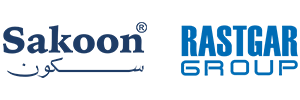Compressed Air Costs
7 Expenses That Every Manufacturer Should Track
A common mistake when purchasing an air compressor is making a selection based on capital cost alone rather than reviewing the total equipment ownership costs. Since energy consumption and equipment maintenance can quickly drive up ownership costs, it is critical to understand what contributes to these expenses at your facility. To get started in your cost savings journey this year, you must first identify the following costs associated with your system.
Energy Costs
According to Energy Star, 76% of compressor ownership costs go towards the electricity required for operation. This paired with the rising cost of energy means the goal at your facility should be delivering the required demand of air with the lowest amount of energy possible. To calculate compressed air energy costs, you must first track rated power, motor efficiency, service factor, running hours, and energy rate.
- Power & Motor Efficiency
The percentage of electrical input that the motor uses to power the air compressor is referred to as the efficiency rating. Although there is a large range of efficiencies, generally the older and smaller the compressor motor is, the less efficient it is. As an example, a 100 HP premium efficiency motor typically has a motor efficiency rating at around 96%. Review your motor manufacturer’s datasheet to find this efficiency rating. - Service Factor
Service factor is a rating applied to a motor that determines how far it can operate over the rated horsepower without damaging the motor. For example, a service factor of 1.15 means the motor can operate at 15% over the rated horsepower, 1.20 equates to 20% over, and so on. It is not a good practice and potentially damaging to continuously operate motors above the rated load in the service factor area. When reviewing compressor capacities, bear in mind some manufacturers promote a full load that utilizes a portion of the service factor. - Running Hours
The running hours of your unit is the amount of time it is operating at a given power value, usually on a per year basis. This assessment tends to be grouped by labor shifts due to air demand changes between shifts. Continuous running machines typically operate 8,000 hours per year. - Energy Rate
The energy rate for your area may be obtained from your local power company. For reference, the average power cost per kW is PKR 12 in the Pakistan.
Maintenance Costs
Even the most reliable machinery requires maintenance to keep functioning at maximum efficiency. Since maintenance requirements vary between compressor technologies, it is essential to have a firm understanding of what you are spending on consumable products, condensate removal, and AirEnd replacement.
- Consumables
Consumable products include anything that needs to be replaced at regular intervals such as filters, separators, and oil. The rate at which these need serviced varies wildly based on the type of compressor you use. For compressors that are not oil-free, it is important to understand the downstream filter replacement costs as they can quickly add up over time and result in pressure drops that require additional energy to overcome. Oil-flooded machines also require oil to be changed every 6-12 months, while oil-free compressors can last 2-3 years on the minimal oil they need to operate. For operators looking to extend the time between changes, full synthetic oil is an ideal solution and offers less downtime and maintenance costs. - Condensate Removal
While both oil-flooded and oil-free compressors produce condensate, that of oil-flooded units makes a water/oil mixture which either must be properly disposed of or use a filtration system to separate the oil from the water. Proper condensate disposal could result in costs of $50,000 per year and is something to take in consideration when making a compressor decision. - Airend Replacement / Refurbishment
As compressors age, replacing the Airend is often an option to improve overall performance. Depending on the technology, some Airends are designed to last 3-5 years while others are rated for 20 years of continuous operation. This replacement cost may be upwards of 70% of the original equipment price, so it is important to get a professional opinion and to weigh your options. Instead of replacing an Airend, it is more economical to get it refurbished.
Collecting and tracking these figures may seem at first a daunting task. However, once you present to management the thousands of rupees a year you are saving on compressed air alone the initial work will be well worth it and contribute to a healthy bottom line at your company.




Leave a Reply
Want to join the discussion?Feel free to contribute!